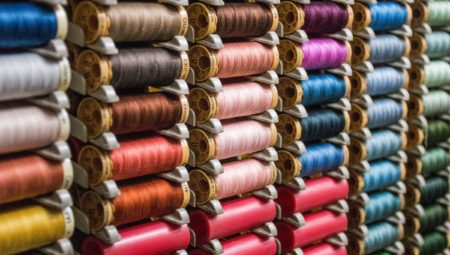The sector association Modint, the AMIBM and Chill (Chemelot Innovation and Learning Labs) have joined forces in the BioTex Fieldlab (BTF) with eight players in the above sector and suppliers of the polymers concerned. ‘It is an open innovation centre,’ according to Gunnar Seide, project leader at the BTF. ‘What we want to do is develop fibres and yarns based on PEF and PLA that can be used in specific applications. In the long term we can also include other biopolymers such as bioPET, bioPA, PT, PBS and PHA. In the short term we will stick to PEF and PLA, also in view of the involvement of Avantium and Corbion in the BTF.’
Value for money
In incorporating these biopolymers in existing products the sector not only wants to increase its own sustainability and that of the individual companies, but also build up a competitive advantage. ‘You need to consider properties like biodegradability or yarns which feel different or are easier to clean,’ says Peter Koppert, Innovation and Sustainability manager atModint. ‘In many cases, these materials need to have a similar lifespan and a price that gets close to that of polyesters. Currently biopolymers are unable to compete in terms of value for money against fossil polymers. That is one aspect that the parties in the BTF are going to work on.’
Better properties
Seide believes that the biopolymers can be ‘tweaked’ to make them suitable for textile applications. For example, for fibre applications PLA needs a higher molecular weight than is usual for packaging purposes. ‘Corbion is working hard on developing these grades. They will then be tested in the different phases of the production chain. At the BTF we have the necessary equipment to investigate whether the yarns can be used in existing production environments as well. Then we can also test whether the yarns in an application satisfy the sector requirements and can possibly add extra or improved functionality. We might find unforeseen properties. It was only when PEF was being upscaled that Avantium discovered the material had better barrier properties than PET.’
No easy task
Koppert claims that what makes the BTF unique is especially its expertise in textile yarns. While the Netherlands does have some say in the field of technical yarns, a great deal of knowledge has been lost in that of textile yarns. ‘In Aken and Geleen we have state-of-the-art equipment which covers all the relevant processes such as extrusion and texturing of yarns. If the chemical composition of the yarns changes, certain process parameters (temperature, etc) will have to be adapted, for instance during the spinning.’ The production process comprises a number of steps the new yarns have to go through, such as compounding, spinning, tufting, backing and knitting (editor’s note: in this case, carpets). ‘It is no easy task to incorporate biopolymers,’ says Seide. ‘If it were easy, anybody could do it. Then we wouldn’t be able to offer any added value as BTF.’
Mono-materials
By 2020, eight applications should have rolled out of the BioTex Fieldlab based on PEF and PLA yarns. Tangible products which possibly already have market potential. One of the participants is Star Sock from Tilburg, a company that has socks produced and sells them in the Netherlands and abroad. Willem Schilders, buyer at Star Sock: ‘The yarns most used are nylon, polyester, cotton and elastane. That forms around 80 percent of the volume. We want to make these streams more sustainable, partly by reducing certain materials (including nylon from fishing nets and carpets) to monomers and then polymerising them into nylon. A different route is using biobased yarns. At the BTF we use PLA blends which we want to test initially, already in combination with existing yarns, in the production of socks. Important properties are heat resistance (editor’s note: see the washing temperatures), strength, material thickness and wear. In the long term we want to use mono-materials as much as possible, largely because they are easier to recycle.’



